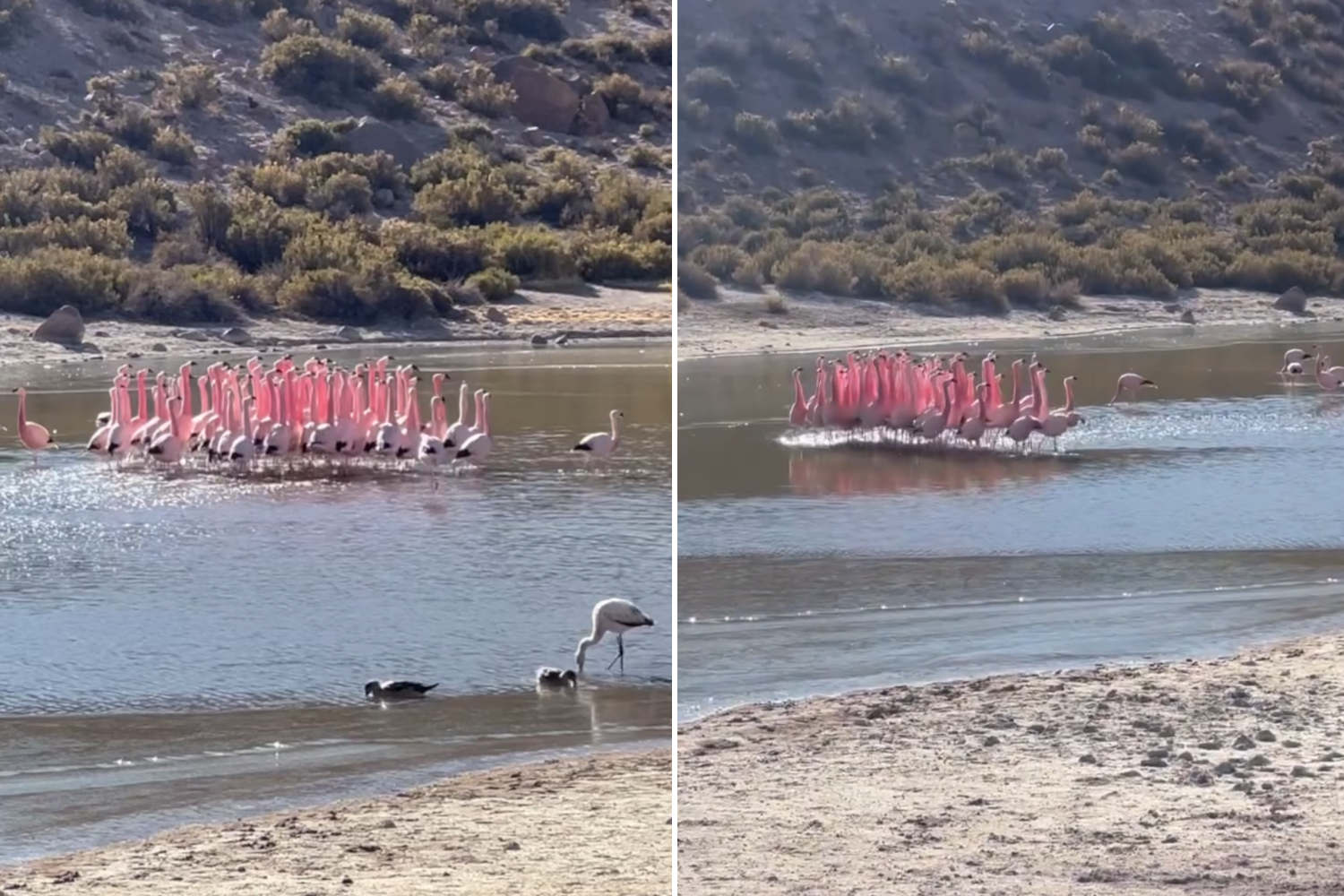The seasonal return of flamingos to Chile’s high-altitude wetlands is both a natural spectacle and a warning about the fragility of Andean ecosystems.

In the landscapes of the Chilean plateau, between salt lakes and high-altitude marshes, one of the season’s most fascinating spectacles has begun: the return of the flamingos. Their arrival in the wetlands of Machuca, in Chile’s Antofagasta Region, marks the start of a vital cycle that draws tourists, biologists, and local communities alike.
The ritual of courtship
Those lucky enough to witness the event are treated to the flamingos’ elaborate courtship displays. Dozens of birds move in unison, creating genuine synchronized choreographies. These collective dances are accompanied by vocal calls and constant preening, which makes their plumage more luminous and intense as the breeding season unfolds.
A sign of health and vitality
The bright pink hue is not just for show: it’s a biological indicator. Females select males with the most vivid tones, a sign of good health and strong genetics. This makes the ritual not just beautiful to watch but essential to the survival of the species.
The three starring species
The Chilean plateau is home to three species. The Chilean flamingo (Phoenicopterus chilensis) is the most widespread. Then comes the Andean flamingo (Phoenicoparrus andinus), recognizable by its mostly white plumage with pink touches. Finally, the smallest, the James’s flamingo (Phoenicoparrus jamesi), also known locally as parina chica. Each of them depends on the delicate high-Andean ecosystems, which today face growing threats from climate change and extractive industries.
A phenomenon that unites the Andes
This migration is not confined to Chile. These flamingo species move seasonally across borders, connecting Chile, Bolivia, Argentina, and Peru. Their journeys remind us that nature respects no geopolitical boundaries. For local communities, the return of the flamingos is more than a scenic gift—it is evidence of the region’s ecological resilience.
A message for the future
That the first flocks have chosen Machuca once again is a hopeful sign: the habitats still maintain favorable conditions. Yet, their presence also serves as a warning. Protecting these fragile high-altitude ecosystems is essential. To safeguard the flamingos is, in the end, to defend the biodiversity and natural heritage of the Andes themselves.
